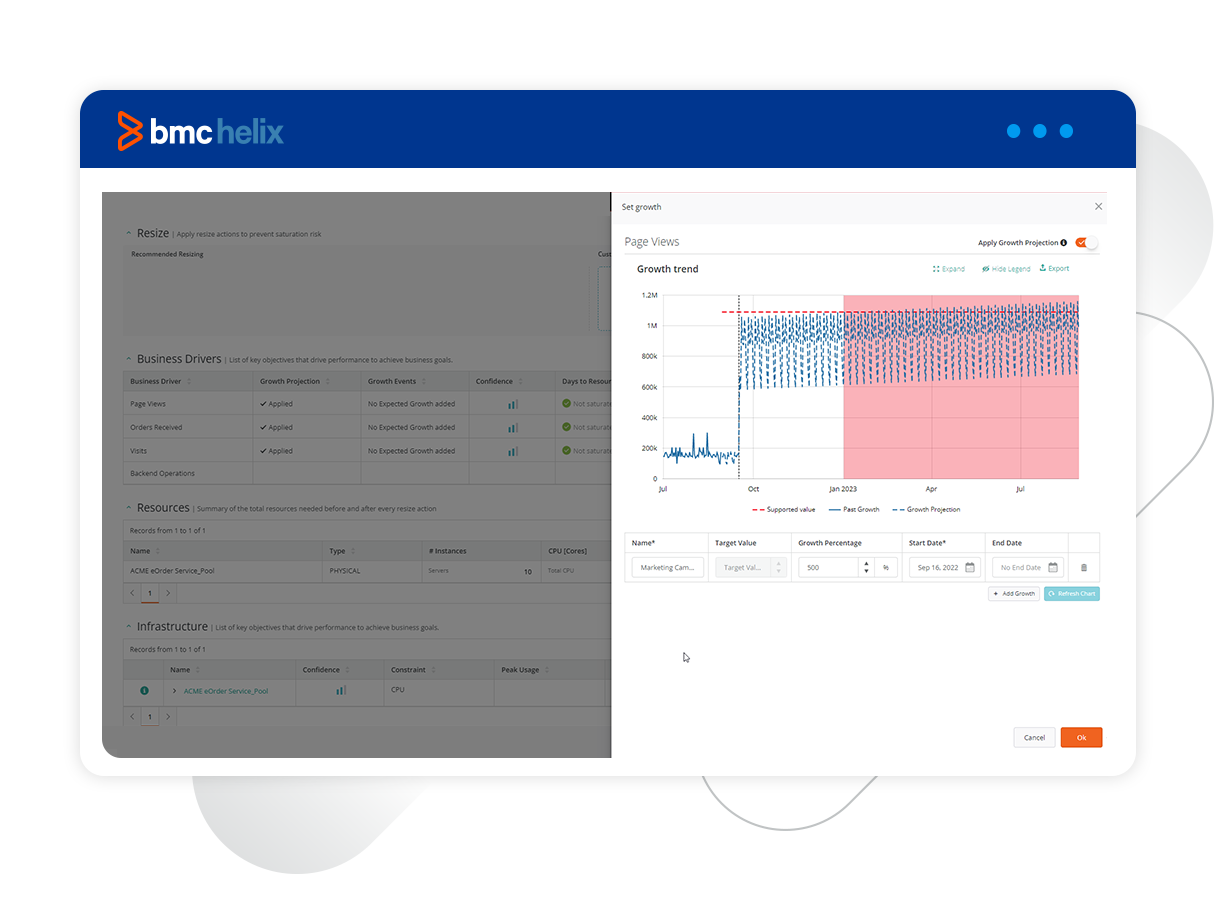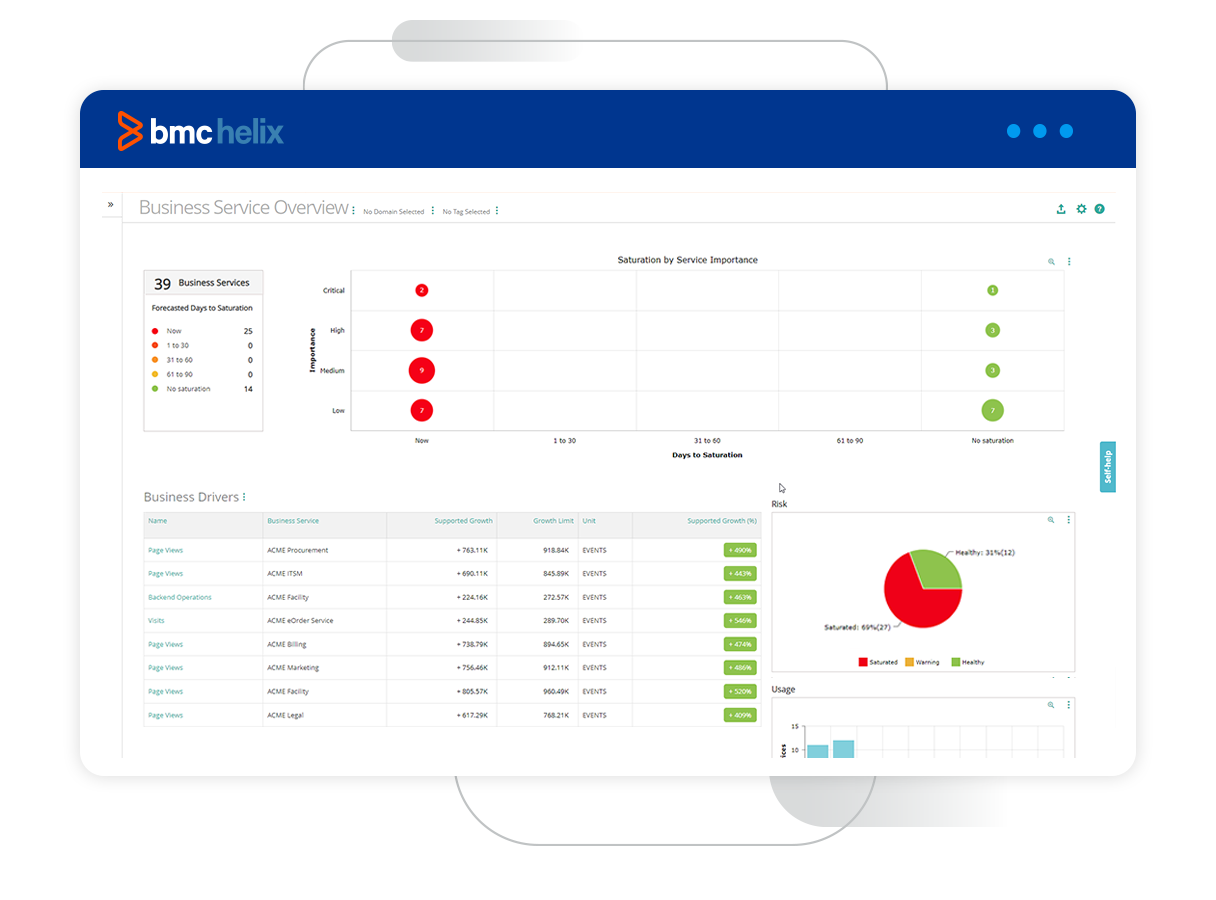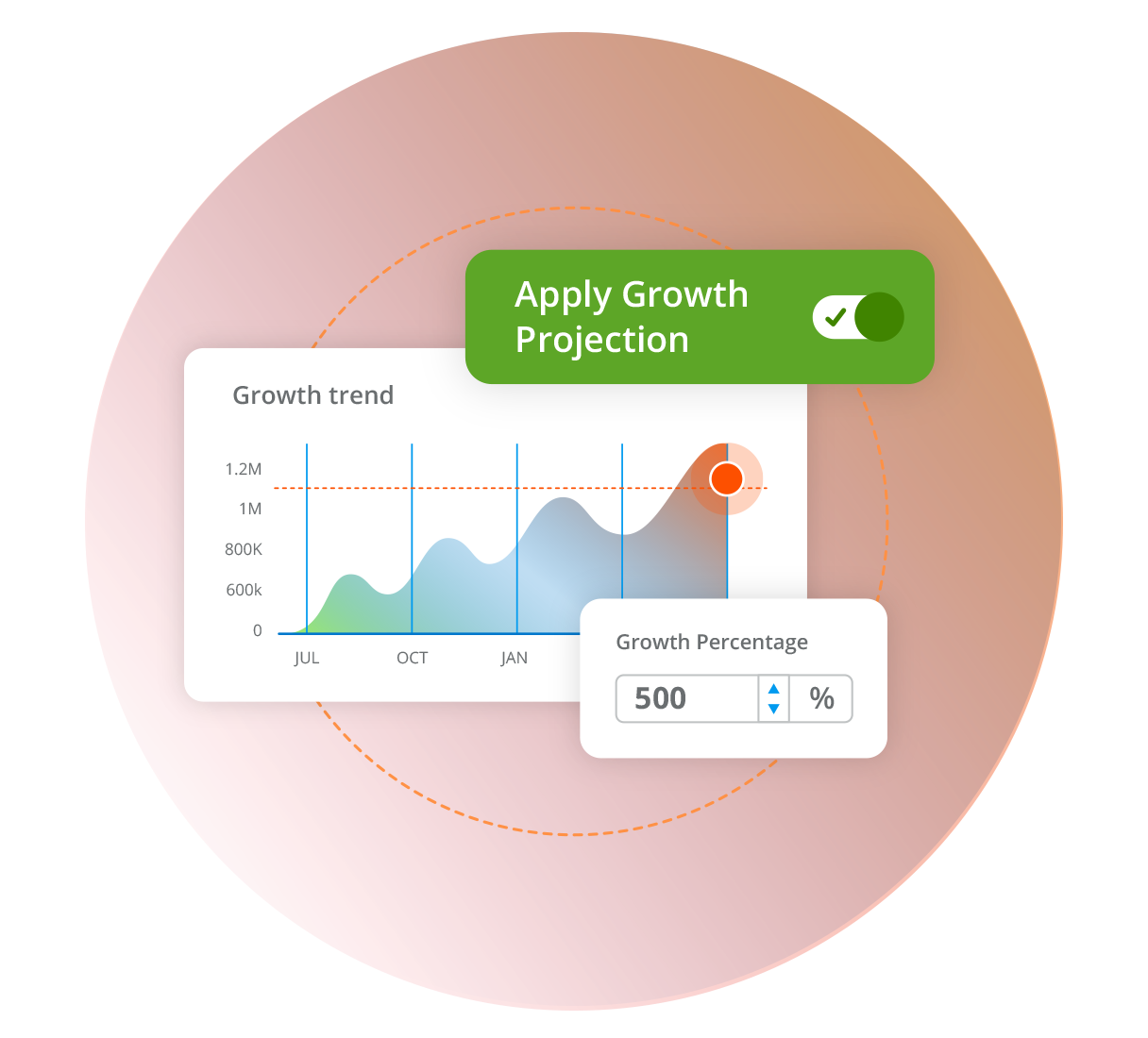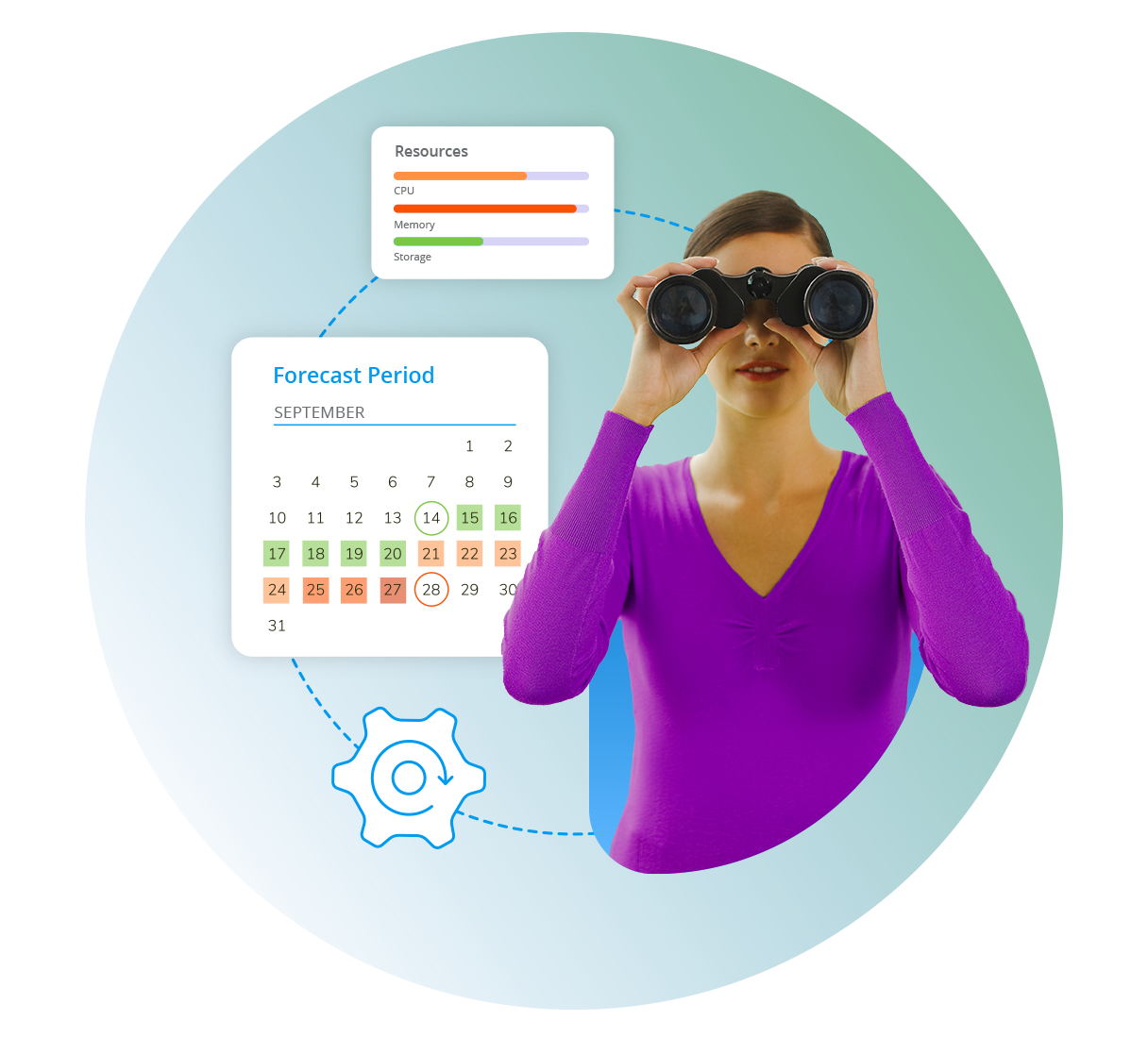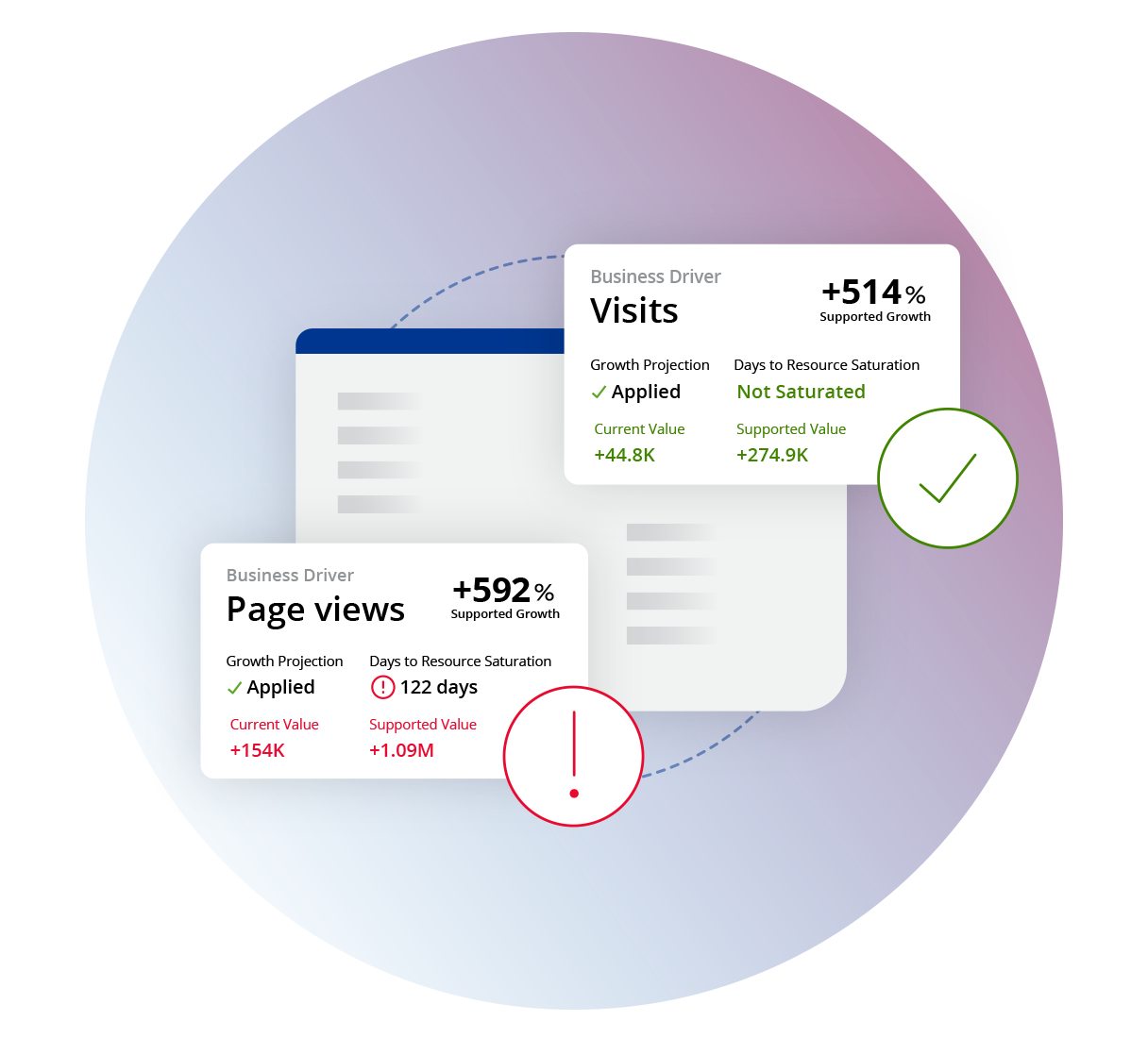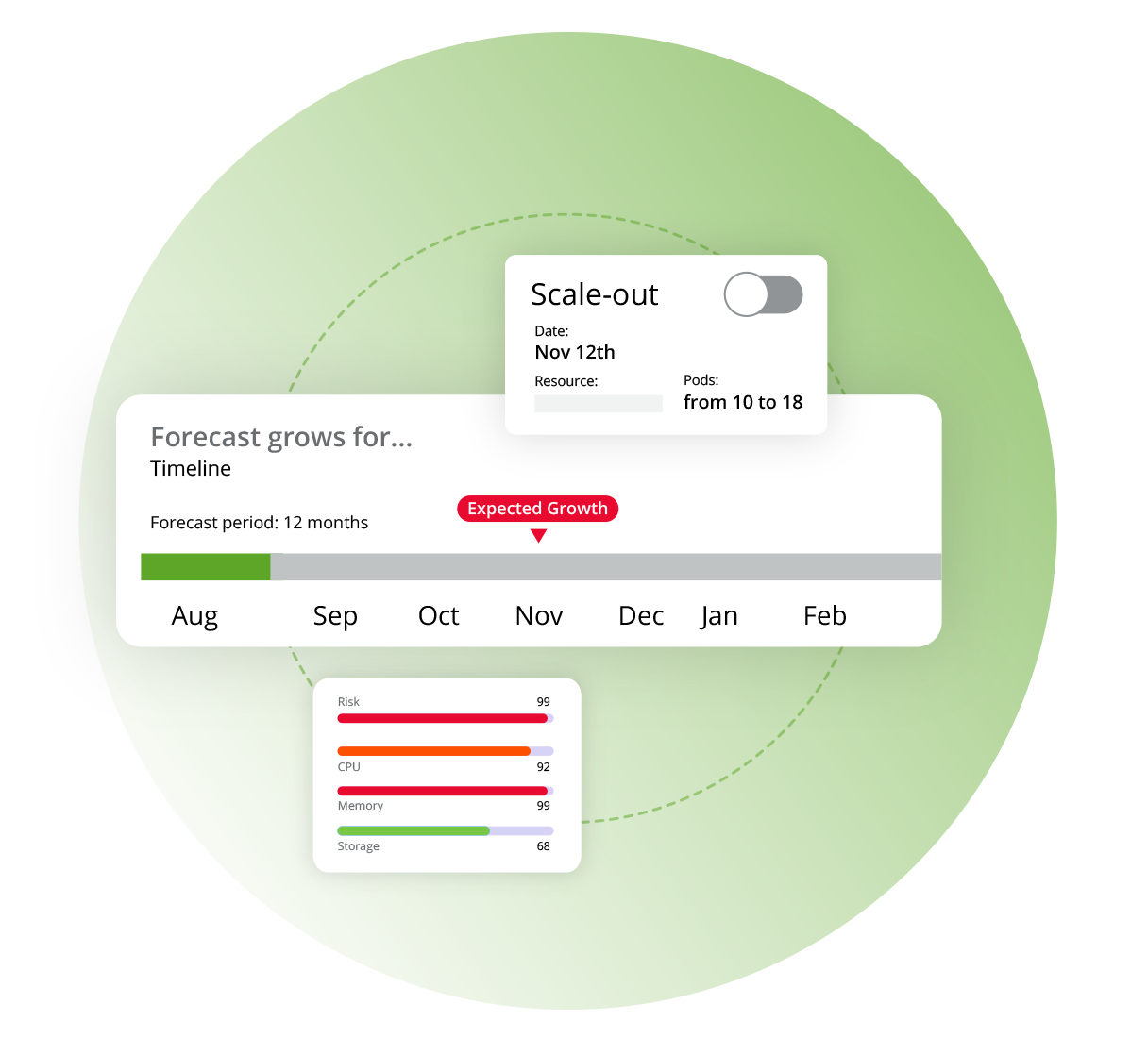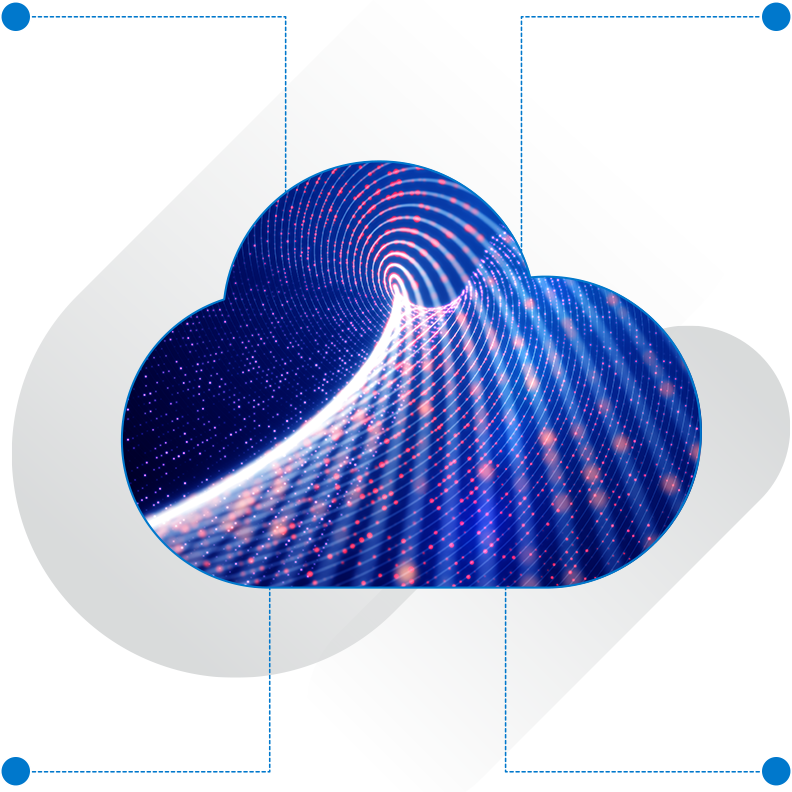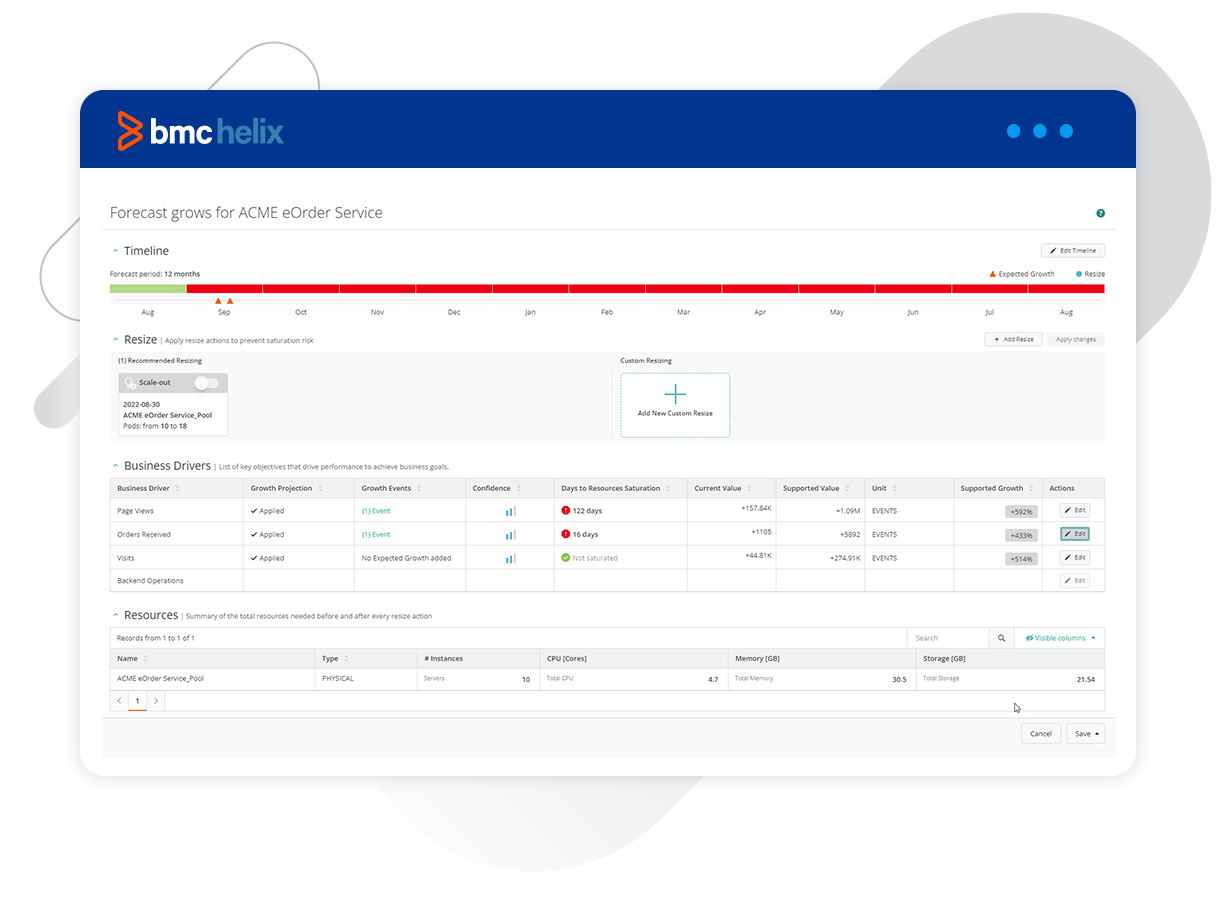
Choose which areas to stress-test
The world is unpredictable, but with the right AIOps toolkit, that's no longer a problem.
What-if scenario planning simulates changes in internal and external conditions so you can understand the impact on your service operations and plan accordingly. To begin, decide which component of your business services ecosystem you want to test against a hypothetical future situation. This can be any component of your company’s environment, from a single platform to overall sales revenue.

